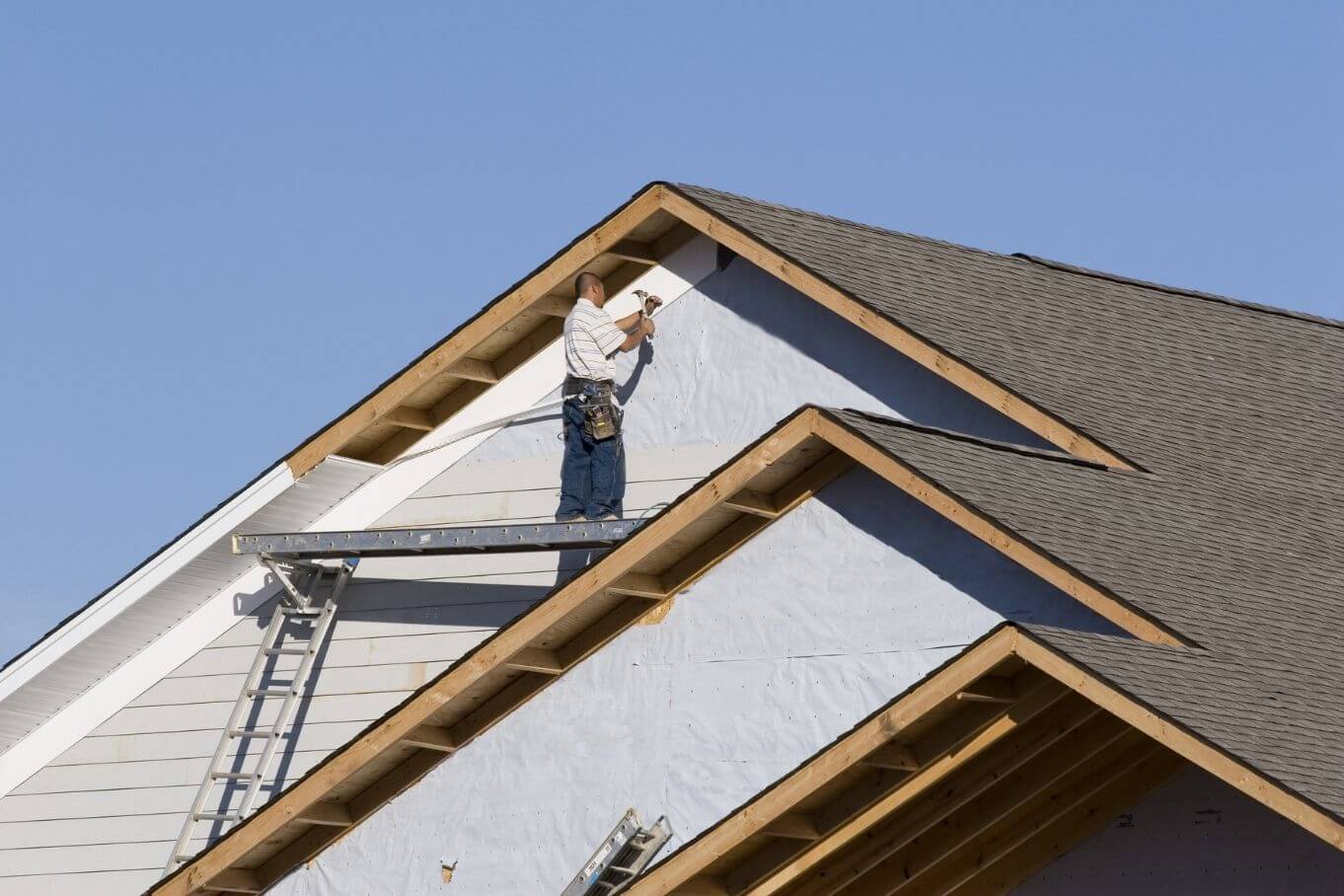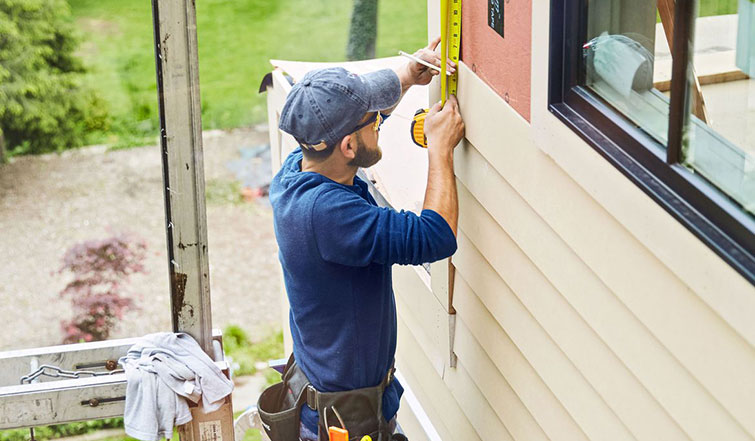The Important Overview to the Different Types of House Siding and Their One-of-a-kind Benefits
In the world of home renovation, picking the appropriate siding is an important decision that affects both visual appeal and practical performance. With so many options to consider, which exterior siding material really stands out for your particular job?
Wood Exterior Siding
Wood siding, a prominent option for domestic outsides, provides an ageless visual that incorporates natural elegance with structural integrity. This siding product is offered in various designs, including clapboard, shingles, and board-and-batten, permitting house owners to personalize their façade to match their layout choices. Wood house siding is commonly crafted from long lasting species such as cedar, redwood, or ache, which are understood for their resilience and capability to endure ecological stress factors.
One of the key benefits of wood home siding is its excellent insulation properties, which can add to energy performance and lower home heating expenses. Additionally, wood siding is naturally degradable, making it an eco-friendly alternative when sourced sustainably. Routine upkeep, including painting or discoloration, can prolong its life expectancy and boost its appearance, enabling property owners to maintain the natural appeal of the timber.
However, prospective drawbacks include sensitivity to insects, rot, and weather condition damages, necessitating appropriate treatment and upkeep - morris siding contractor. Regardless of these issues, when effectively cared for, timber siding can offer a beautiful and long lasting option that improves the character of a home while providing a warm, inviting atmosphere

Plastic House Siding
Plastic exterior siding has emerged as a leading choice for property owners seeking a low-maintenance exterior alternative that integrates toughness and affordability. This flexible material is crafted from polyvinyl chloride (PVC), making it resistant to different weather, including moisture and UV rays. Because of this, plastic exterior siding does not warp, rot, or discolor, ensuring resilient aesthetic charm.
Among the primary advantages of plastic exterior siding is its considerable series of designs and shades, allowing home owners to achieve the preferred appearance for their building without the requirement for constant repainting. Additionally, vinyl house siding is easy to set up, which can dramatically decrease labor prices throughout building or improvement projects.
Plastic house siding also contributes to energy performance. Many options function insulation support, which boosts thermal efficiency, helping to preserve comfortable indoor temperature levels and possibly decreasing power bills. Its smooth surface area promotes very easy cleaning, requiring only routine washing with a yard tube to get rid of dirt and debris.
Fiber Cement Home Siding
Fiber concrete home siding has actually obtained grip amongst building contractors and homeowners alike due to its remarkable combination of longevity and visual versatility. Made up of a blend of sand, concrete, and cellulose fibers, this exterior siding choice is crafted to stand up to severe weather, consisting of high winds, heavy rain, and temperature level fluctuations, making it a long-lasting option for household outsides.
Among the primary advantages of fiber cement house siding is its resistance to insects, such as termites, and its non-combustible nature, offering boosted fire safety. morris siding contractor. In addition, it is available in a large array of styles, appearances, and colors, permitting house owners to achieve their wanted aesthetic without compromising efficiency
One more benefit is its reduced maintenance needs; fiber cement siding normally calls for painting or staining every 5-10 years, which is much less constant than other products. In addition, its longevity adds to a lower general price of ownership, as it decreases the demand for frequent repair work or substitutes.
Eventually, fiber concrete siding represents a superb investment for those seeking helpful resources a resistant, attractive, and flexible outside alternative, combining both form and feature to enhance the home's curb allure.
Metal Home Siding
The allure of metal home siding hinges on its robust toughness and contemporary aesthetic appeal, making it a popular choice for modern architecture. Readily available in products such as aluminum and steel, steel exterior siding offers a variety of coatings and colors, permitting homeowners to achieve a personalized appearance that matches their style vision.

Power effectiveness is an additional substantial benefit, as many metal siding products are developed with insulation choices that aid manage interior temperature levels. This can result in minimized power expenses gradually. In addition, steel exterior siding is typically recyclable, making it an eco pleasant option for sustainability-minded house owners.
The setup process for metal siding can be reasonably uncomplicated, leading to a quicker turnaround time for construction projects. Overall, steel home siding combines functionality and design, making it a functional alternative for those looking for a visually enticing and enduring exterior finish.
Block and Rock House Siding
Block and rock home siding stands out as a classic option that enhances the visual beauty of any kind of home. Understood for their sturdiness and low upkeep, these products offer a remarkable roi while go to website boosting the residential property's visual appeal. Readily available in different colors, appearances, and patterns, block and stone can be tailored to fit diverse building designs, from standard to contemporary.
Among the main benefits of brick and stone home siding is their energy performance. Both materials possess all-natural insulating properties that assist manage indoor temperature levels, possibly minimizing cooling and heating expenses. Furthermore, they offer superior fire resistance contrasted to other house siding choices, adding to boosted security.
Another benefit is their longevity. Block and rock can last for years, frequently requiring marginal maintenance past occasional cleaning. Unlike timber home siding, they are invulnerable to parasites and rot, guaranteeing a durable outside that withstands the components.
Conclusion
In summary, the choice of house siding significantly affects a home's aesthetic charm, energy performance, and upkeep demands. Each type of exterior siding-- whether wood, vinyl, fiber metal, cement, or block and stone-- offers special benefits customized to various home owner choices and environmental conditions.
One of the key advantages of timber house siding is its exceptional insulation residential or commercial properties, which can contribute to energy effectiveness and reduced heating costs. In addition, wood house siding is eco-friendly, making it an ecologically pleasant alternative when sourced sustainably.One of the main benefits of metal exterior siding is its resistance to different environmental elements.Energy effectiveness is another substantial advantage, as many steel exterior siding products are made with insulation options that help control interior temperature levels. Each kind of siding-- whether wood, vinyl, fiber steel, concrete, or brick and rock-- supplies unique benefits tailored to various property owner preferences and ecological problems.